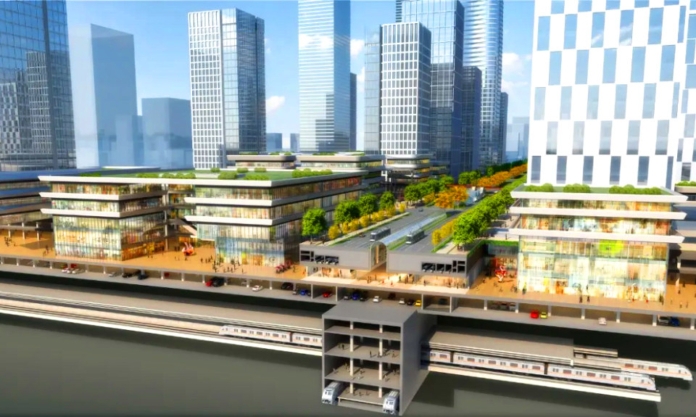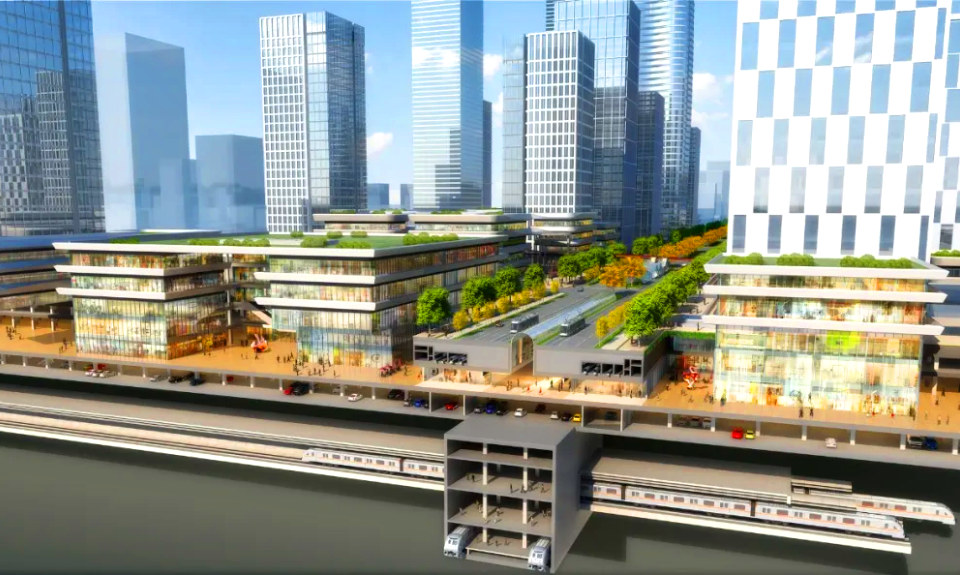
Image courtesy Nanjing Jiangbei New Area
The superlatives just keep on coming. We’re just a few years from Nanjing having a new tallest building, and it’s going to sit on the largest underground space in China. And by extension, there is a good chance that makes it also the largest underground space on Earth.
Released yesterday were the latest developments with the project as they relate to China’s commitment to achieving carbon neutrality by 2060.
The concept of healthy, civilised and low-carbon development is deeply rooted in the green genes of what will be the core of Nanjing’s Jiangbei New Area, and buildings are a powerful measure for the central business district to write green answers for high-quality urban development.
But these seeds were in fact sown long before the world hastened its climate pledges. It was back in 2017 that Nanjing’s “Vertical Forest” was born as the brainchild of Italian architect, Stefano Boeri.
As this publication reported at the time, the concept incorporates greenery on the building façades extending to its full height.
The project is the first Vertical Forest in China, applied through research and practice into Nanjing’s local climate, landscape, vegetation, site conditions and other aspects which, combined with each other, bring real building innovation and urban biodiversity to China.
The idea struck a chord with the good folks over at Jiangbei New Area. Why just one vertical forest when we could have many? And that’s what’s taking shape on the northern banks of the Yangtze River in Nanjing.
The Vertical Forest, though, is now being called a “Smart Tree” in the overall scheme of things for the enormous development in Jiangbei, reported the Area’s official WeChat account yesterday.
Elsewhere above ground, concrete began being poured in August of this year on the Nanjing Greenland Jinmao International Financial Centre. With five floors underground and 102 above, the building will top out at 499.8 metres. And that’s because the latest building regulations in Nanjing state that nothing be taller than 500 metres. The Centre is expected to take the Nanjing crown upon completion in 2025.
Down under though is where the action is, at least for now. In a special report, Qian Qihu, of the Chinese Academy of Engineering, analysed the relationship between the development and utilisation of underground space and the green transformation of carbon storage, energy, construction and transportation.
“The development and utilisation of underground space can play an important role in the carbon peak and carbon neutrality, making positive contributions”, said Qian. “The use of underground space releases ground space and creates a green ecology. This is one of the biggest contributions to negative carbon emissions.”
The record-breaking underground space covers a total of seven floors. Two levels are reserved for metro lines, while the others shall be occupied by retail, parking and the necessary utilities.
Sinking some 48 metres into the earth, that’s like putting a whole 16-story building underground.






